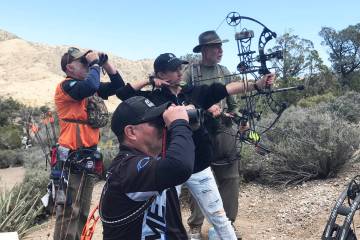Grandma’s lesson: Keep it simple
While working my way through the fishing section of a large outdoor store recently, I was amazed at how many different fishing baits lined the shelves. I was amazed not only at the sheer number of baits, but also the many variations of each bait. Aisle after aisle they went, from one end of the fishing section to the other.
I couldn’t help but wonder how someone who is new to fishing could possibly know where to begin.
When it comes to trout, experience has given me a pretty good idea of what works and what doesn’t, what catches fish and what catches anglers, not to mention our money. But when it comes to bass in all their varieties, this converted trout fisherman still has much to learn. There are soft baits, hard baits, spinnerbaits, buzzbaits, and crankbaits; and the list goes on. So the process of selecting one brand, one color and one type of bait over another can be a bit of a struggle. That’s when the cash register starts ringing.
Do you need a 4-inch worm or a 7-inch worm? Do you need a Senko or just a product that looks like one? Do you want a bait that is motor-oil, green pumpkin or simply olive in color? And what about flakes? Do you need flakes in your bait?
One look in my tackle box will let you know I have yet to figure it out. Does anyone know if you can return for a refund those baits that have yet to yield so much as a bite let alone a fish?
While pondering this subject, I couldn’t help but wonder about anglers who plied their trade back in the day. How did they catch fish without aisles and aisles and hundreds of catalog pages of baits to choose from? By keeping it simple is my guess.
In her younger years, my grandmother was quite the outdoorswoman. Born in a tent on a cold December day along Utah’s Duchesne River, Grandma grew up serving meals in the mining camps of eastern Utah. One of her favorite meals was mountain lion, another was black bear. When it came to fishing, Grandma had no use for “those fancy rods and reels.” Instead she liked to keep things simple.
On one family outing along the Colorado River not far from Yuma, Ariz., we went fishing for bluegill in a little backwater. There weren’t enough fishing rods to go around, and it was my turn to watch. Needless to say, I wasn’t too happy, and as young boys often do, I began to make my feelings known. Probably to save my backside from a fatherly educational experience, Grandma put her arm around me and said, “We don’t need one of those fancy getups to catch a fish. Here, let me show you how we did it back in my day.”
Grandma showed me how to pick a proper fishing rod from among the nearby willows. There she cut a willow that was sturdy yet flexible enough to do the job. There were no line guides, no reel and no handle to turn. Even now I can hear myself saying, “But Grandma, how am I supposed to catch a fish with that?”
Undaunted Grandma cut a piece of fishing line from its spool and tied one end of it to the small end of the willow rod. To the other end of the line she tied a hook and then placed a split shot sinker a foot or so above that. Then we walked down the bank to a brushy area where she schooled me in the art of simple fishing. I can no longer remember what we used for bait — worms is my guess — but whatever Grandma put on the hook, it worked.
She showed me how to drop the bait next to the submerged brush or grass beds and then let it sit. Without a reel and its handle there was no temptation to turn it, which made it a little easier to be patient. Suddenly the tip of my homemade willow rod bounced hard, and then again. I lifted the rod and on the end of the line was a bluegill, the first of many that day.
Though I am not ready to give up my modern rods and reels, I can’t help but think the answer to selecting baits from among the many available on store shelves today is to keep things simple and maybe even a little organic.
“Excuse me, ma’am. Do you carry night crawlers?”
Freelance writer Doug Nielsen is a conservation educator for the Nevada Department of Wildlife. His “In the Outdoors” column, published Thursday in the Las Vegas Review-Journal, is not affiliated with or endorsed by the NDOW. Any opinions he states in his column are his own. He can be reached at intheoutdoorslv@gmail.com.






















